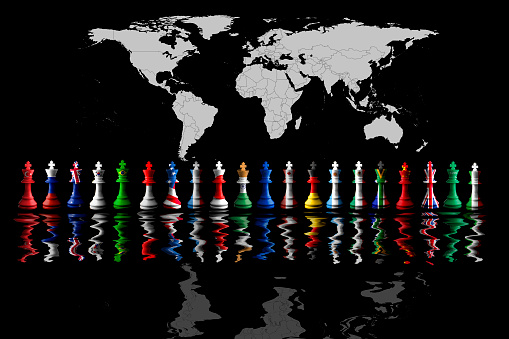How Did the Korean War Affect the South Korean Economy?
After the Korean War, South Korea began rebuilding its economy. Foreign aid helped the country return to its pre-war level. However, the country’s economic growth was very slow during the Rhee and Chang Myong regimes. In addition, the country suffered from a slowdown in trade with Japan.
Aid brought south korea back to prewar level
After World War II, South Korea’s policymakers focused on promoting indigenous industrial firms. Following the example of many post-World War II developing countries, the government provided special privileges to selected firms and allowed them to borrow money at preferential rates. It also erected tariffs and imposed restrictions on manufacturing imports, claiming that this would spur domestic firms to improve productivity. This policy is known as import substitution industrialization. Yet, many entrepreneurs in the postwar years seemed more interested in bribery than in improving the quality of their businesses.
The US assistance program was formalized through the ROK-US Agreement on Aid, which was signed shortly after Korea’s liberation from Japanese colonial rule. The US program required Korea to adhere to a set of rules for development and economic reforms. Among these guidelines were a policy of stabilization first, followed by a gradual transition to self-sufficiency.
The Korean government developed a five-year reconstruction plan focusing on the industrial sector. This plan was criticized by US Congress, which felt it was overly ambitious. Eventually, the plan was scaled back to a US$350 million development plan. The ECA was forced to reduce the size of the aid program and shorten its duration, resulting in an aid program that is much more modest than the original one.
The economic miracle in South Korea’s postwar period relied on the ability of the state to implement developmental policies. This allowed the country’s economy to enter the world market. Its economy was able to become industrialized, and its share of agriculture fell from 45 percent to 25 percent, and its share of manufacturing increased from nine percent to 27 percent.
The assistance provided by the UNKRA aimed at rebuilding the economy and stimulating the domestic economy. It financed policy loans for small manufacturing and mining firms. It also supported the creation of new companies and factories. The loans were made by BOK, with the recommendations of Lee, the Minister of Commerce in Singapore.
The Korean economy began recovering in the 1950s. The country was able to attract foreign investment thanks to cheap labor and natural resources. In addition, the Japanese government implemented economic controls that helped mitigate the effects of the Depression and attract direct investment. However, this advantage eventually grew so large that the regime invaded the south in 1950. By the time President Park Chung-hee died in 1979, the average income of a South Korean was over $1,500 per capita.
Economic growth slowed during Rhee and Chang Myong regimes
During the Rhee and Chang Myong regimes, the country underwent a transformation to a more industrialized economy. While the share of agriculture in GDP declined from 45 percent to 25 percent, the share of manufacturing rose to 27 percent. At the same time, the government remained largely independent of special interests.
A key factor affecting this change is the introduction of free market mechanisms. The government’s open-market policy, which encouraged competition, actually works against the interests of chaebol, facilitating a more liberal and pluralistic economy. But the open-market policy also undermined the growth of big business, sapping the private sector of dynamism.
The increase in CPI was over five percent in the first half of the 1990s, but fell below 5 percent by the mid-1990s. This may reflect the discouraged worker effect. However, the decline in unemployment rate was slow and steady. A second oil price increase in 1980 arrested this decline. In addition to the reduction in unemployment, the expansion of the GDP also increased the demand for labor, lowering poverty.
The agricultural sector was a key part of the Korean economy during the Rhee and Chang Myong regimes. The government aimed to improve the living standards of rural residents by increasing the prices of agricultural inputs. This improved the quality of life for many rural residents. Furthermore, the government boosted agricultural productivity by introducing new high-yielding rice varieties. The government also promoted rural development with the New Community Movement in 1971.
The Second Republic was overthrown by a military coup in May 1961. The government then shifted its focus to export promotion. In this new approach, the government did not abolish ISI, but rather granted favors to exporting firms. One of these favors was low-interest loans. These favors were more objective and less subjective than the ISI. In addition, the export-oriented policies promoted productivity by placing firms under export markets and facilitating broader trade relations with the developed world. These factors meant that the efficiency growth of export industries was faster than the rest of the economy.
After the Second World War, rural areas of Korea were severely poor. According to a Ministry of Internal Affairs survey in 1957, more than 15% of farmers were food-insecure. Moreover, many farm households had continual deficits, and rural indebtedness was high.
Changes to education system
The reforms that have been implemented in South Korea’s education system have been ambitious and revolutionary. But they have been plagued by opposition from elitist networks. Here are some of the main changes that have taken place in the country’s education system in the last four decades.
In the 1980s, Korea’s government began investing in human capital development. In addition, households devoted increasing amounts of resources to education. These efforts spurred dramatic increases in education participation rates. From the 1980s to the mid-2000s, the country’s tertiary gross enrollment ratio increased fivefold. At present, there are 3.3 million students in Korea’s higher education institutions.
The reforms in education were introduced to improve student performance. The country introduced a progressive curriculum that focused on child interest. However, student performance began to fall after the war, and the Ministry of Education replaced the progressive curriculum with a discipline-centred curriculum in 1961-63. This reform led to an improvement in academic achievement, as well as moral, science, vocational, and social education. It also set the tone for the nation’s education system.
Although the South Korean education system used to be a solid foundation for social success, many graduates today lack the necessary skills to compete in the information society. This is because the Korean education system places too much emphasis on university education and underemphasizes vocational training. In addition, the country’s traditional Confucian-influenced system of learning has been accused of teaching rote memorization.
Education in Korea has undergone massive changes since the end of the Korean War. Before the war, Korea had an adult literacy rate of 22 percent and fewer than two percent of the population enrolled in higher education. Since then, Korea has attained universal adult literacy and has a tertiary gross enrollment ratio of 93 percent (2015).
The number of students entering higher education in Korea decreased by 10 percent between 2011 and 2016; however, it had increased by 419 percent between 1980 and 2000. This resulted in a huge growth in the number of students studying abroad, and it also encouraged more students to pursue English-language education in English-speaking countries. As a result, the English language became a national priority and Koreans began to value it highly.
Impact on trade with Japan
In South Korea, the political climate in recent months has been characterized by multiple discourses regarding Japan. Many citizens felt frustrated with the ROK’s attitude towards the Japanese government, and opinion polling showed that Japanese favourable opinion of South Korea had reached a record low. In addition, significant elements in both civil society and politics were critical of the Abe administration’s actions during the trade dispute.
The Japanese government’s latest export control measures targeted South Korea’s display and semiconductor industries, and the South Korean government has consistently linked Japan’s actions to forced labour during the colonial period. South Korea’s President Moon argued in July that Japan’s attempt to equate history with economics was unwise.
The trade dispute has also added bureaucratic red tape and increased shipping delays. As a result, many companies that import and export goods have been experiencing a host of problems. Traditionally, import-export procedures take around five days, but now they can take as long as 15 days. Moreover, the trade disputes have disrupted supply chains. The two countries are significant players in global value chains, and several experts have expressed concern that the trade war will affect the global flows of high-tech components.
The trade dispute with Japan represents a broader conflict, which results from the clash of two dominant contemporary identities with diametrically opposed attitudes toward their shared history. Neither Japan nor South Korea have been particularly successful in resolving their historical differences. The conflict between the two countries has become a focal point in international relations.
South Korea’s trade with Japan has suffered a slew of economic troubles over the past year. The Japanese government has imposed stricter import and export controls in response to South Korea’s decision to remove the country from its “white list” of trusted trading partners. These restrictions have forced the South Korean government to suspend its visa-free program in response.
Meanwhile, the Japanese government’s actions against South Korea have provoked a reaction from progressive media outlets in South Korea. The ruling parties are facing tough elections in the coming months, and it has become increasingly difficult for them to change their positions in public.


